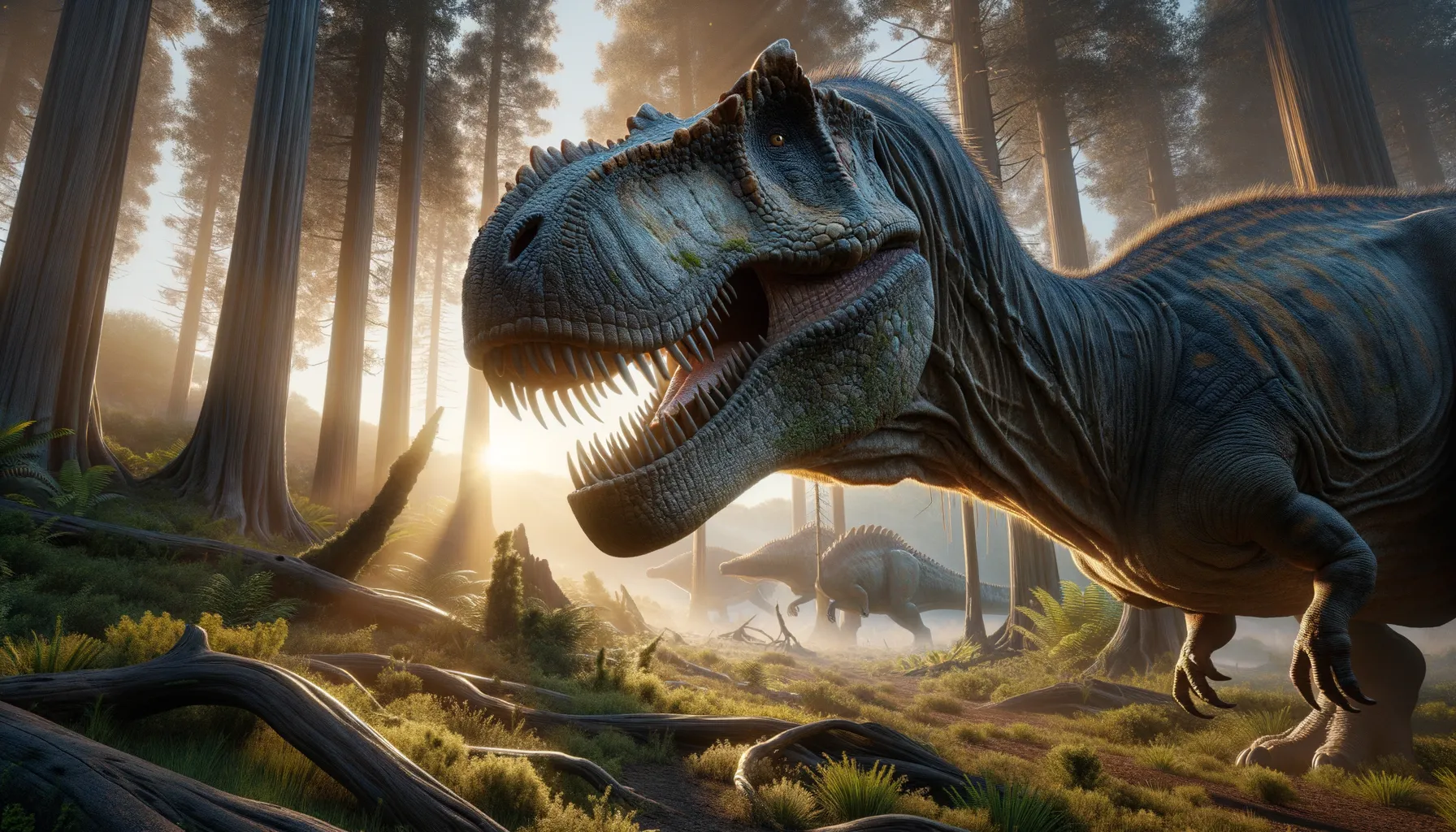
Gigantosaurus
The giant of the prehistoric world.
Period
Cretaceous
Length
Approximately 13 meters long.
Height
Roughly 4 meters tall at the hips.
Weight
Weighed about 8-10 tons.
Gigantosaurus was a massive theropod dinosaur that roamed the ancient landscapes of what is now South America during the Late Cretaceous period. Known for its enormous size and formidable hunting abilities, it was one of the largest meat-eating dinosaurs. With a powerful jaw and razor-sharp teeth, this colossal predator was built for taking down large prey in its ancient habitat, contributing to its standing as a dominant apex predator of its time.
Diet
Gigantosaurus was a carnivore, predominantly feeding on large herbivorous dinosaurs. Its diet likely consisted of sauropods and other sizable creatures that shared its habitat, using its strong jaws and sharp teeth to capture and consume prey.
Hunting
This dinosaur employed a combination of stealth and speed to ambush large prey. Likely hunting in groups, it utilized its strong legs and sharp teeth to overpower and subdue even the most formidable of herbivores.
Environmental challenges
Gigantosaurus faced a variety of environmental challenges such as fluctuating climates and competition for food resources. The arid to semi-arid environments it inhabited were subject to seasonal changes, impacting prey availability. Such challenges would have required adaptability in hunting strategies and territorial behavior to thrive.
Speed
Moderate; could run at roughly 20-30 km/h.
Lifespan
Estimated to be around 30-40 years.
First discovery
First discovered in Argentina, 1993.
Fun Facts
- Gigantosaurus was one of the largest theropod dinosaurs, even larger than the famous Tyrannosaurus rex.
- This massive predator lived during the Late Cretaceous period, about 98 million years ago, in what is now Argentina.
- Gigantosaurus had a large skull, measuring almost 1.8 meters, filled with sharp teeth for catching prey.
- Unlike T. rex, Gigantosaurus had proportionally longer arms, which might have helped in grappling with prey.
- The name 'Gigantosaurus' means 'giant southern lizard,' reflective of its size and discovery in the Southern Hemisphere.
- Paleontologists believe Gigantosaurus hunted large herbivorous dinosaurs, like the massive titanosaur Argentinosaurus.
- Despite its terrifying size, Gigantosaurus was likely a fast runner, capable of chasing down prey with surprising speed.
Growth and Development
Growth rates of Gigantosaurus were possibly rapid during juvenile stages to ensure survival amidst competition and predation. As it matured, Gigantosaurus might have developed distinct physical characteristics like stronger jaws and a robust frame to support its predatory lifestyle.
Habitat
Gigantosaurus inhabited the open plains and forests of South America, which provided ample prey and strategic ambush sites. These environments were lush with greenery during the wet season but could become harsh and arid, particularly impacting herbivorous prey availability. This dinosaur required vast territories to support its dietary needs.
Interaction with other species
Gigantosaurus likely competed with other large predators for food while dominating smaller carnivores and scavengers. Its presence would have influenced the distribution and population of other species within its ecosystem, perhaps even serving as a regulator of herbivore populations.
Natural lifespan
Gigantosaurus may have lived naturally for approximately 30 years.
Reproduction
Reproduction was probably oviparous, with Gigantosaurus laying eggs in nests similar to those of modern-day birds and reptiles. Parental care, if any, might have involved guarding the nest but young were likely independent shortly after hatching.
Social behaviour
While evidence suggests some potential for pack hunting, Gigantosaurus may have been a solitary hunter outside of this behavior. Aggressive territorial behavior was probable, especially around crucial resources like food and nesting sites.
Fossil locations
Fossils of Gigantosaurus have been primarily found in Argentina, offering insights into its distribution across South America. These discoveries often occur in sedimentary rock formations, indicative of the dinosaur's ancient habitats. Paleontological sites offer a wealth of information on its ecology and interactions within the ancient ecosystems.
